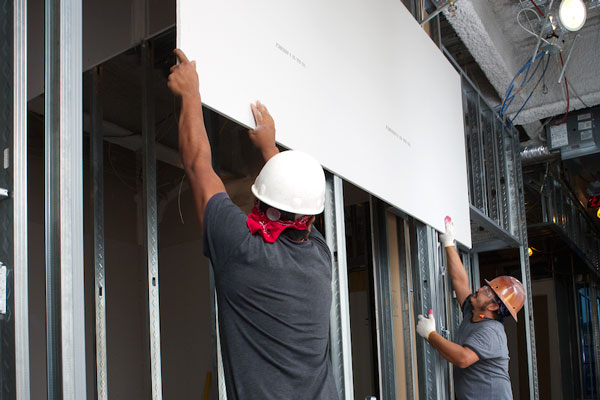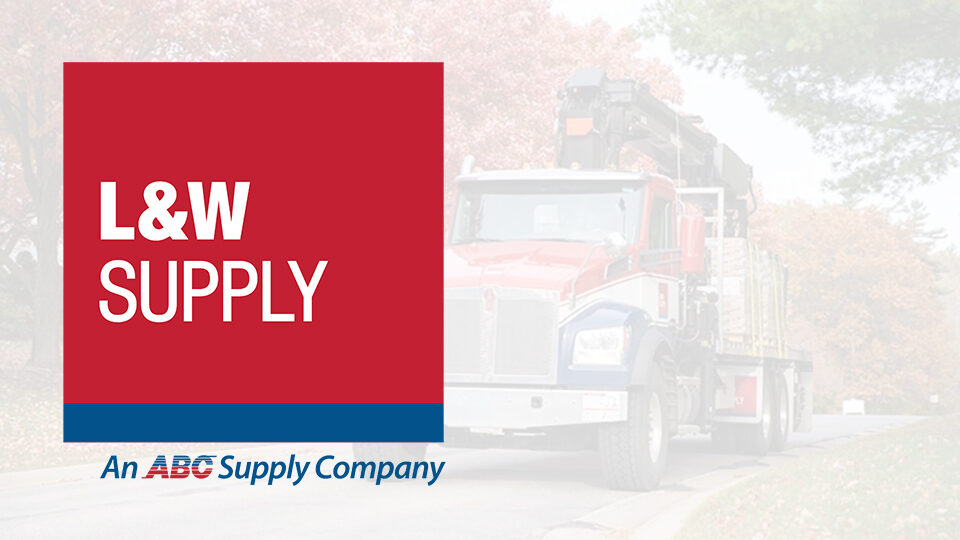
Right Panel, Right Place: The Difference Between Type X and Type C
At L&W Supply, we have a rich history of understanding construction and we know that our customers expect us to keep up to speed with the changes to building materials, codes, and jobsite needs. One of the most common problems we’ve seen over the years on jobsites is the confusion and misapplication of Type X panels in place of Type C panels in fire-resistant construction.
Because of this, it is perhaps no surprise that the most-visited page on our blog is an article detailing the differences between Type X and Type C panels, specifying that Type C is most commonly used in ceilings while Type X can be found in walls. However, since that post was published, the information has become outdated. Therefore, we decided to take a fresh look at the topic.
To help ensure a building’s safety and integrity, it is absolutely crucial that contractors know the difference between the application of these two types of panels. Let’s take a look at a few of these differences between Type X and Type C wallboard starting with the history of their development.
Origins of Fire-Rated Board
The development of fire-rated drywall has come a long way since its inception in the 1940s. Originally created to meet the needs of the growing urban population of the United States, today it is a common feature of homes and businesses around the world.
To help reduce the extent and severity of fire damage, Type X drywall was developed with glass fibers made to reinforce the gypsum core. This strengthens the board, allowing it to last longer during a fire. The amount of time that gypsum panels maintain their physical integrity under fire conditions is crucial for allowing occupants to escape.
As urbanization increased and buildings grew even taller, the need for materials with stronger fire-resistance became even more important. The modern high-rise posed great problems for fire safety when you consider limited access points and a general lack of understanding when it came to fire prevention techniques.
It was during this time that USG invented and pioneered Type C panels. Type C is designed with a higher percentage of glass fibers than Type X, allowing it to be more resistant under fire conditions. The core of Type C also contains a shrinkage-compensating additive called vermiculite, designed to extend the fire-rating even further by expanding in the presence of fire. Ever since then, Type C panels have been widely used in ceiling applications, whereas Type X has been used for walls.
Quick Facts
Up until about 5 years ago, nearly all UL fire-rated floor and ceiling assemblies specify Type C in order to achieve the proper level of fire performance, while Type X panels are most applicable in wall systems. This was the focus of our previous piece – making sure that people understood that Type C was used in Ceilings and Type X is generally for walls.
That generally remains the case, but since then, there have been some changes in product and UL approvals that allow for some different applications. Let’s take a closer look at some of those developments and the changes they have brought.
Modern Innovations
As previously mentioned, USG was critical in the creation and launch of Type C panels back in the mid-1900s. Several years ago, USG introduced a new innovation that further changed the market when they developed Sheetrock® Brand EcoSmart Panels Firecode® X. The product was initially designed for performance in fire rated wall assemblies, but upon further testing USG realized that it could pass testing for UL fire rated floor/ceiling assemblies in many conditions.
Since launch, USG has consistently increased the number of assemblies where Sheetrock® Brand EcoSmart Panels Firecode® X can be used in ceilings. This helps contractors save time and limits the potential for misapplication by requiring only a single panel type for all wall, column, floor-ceiling and roof-ceiling applications. This product is a great change with significant value, but it could create further confusion since now we have a product that can be used in both applications. So when in doubt, please check manufacturer’s information or reach out to your local L&W Supply Sales Representative.
Fire safety is one of the most important elements of construction and the type of wallboard used can have a major impact on a structure’s level of protection. Installing the wrong kind of board can not only be a costly mistake, but can also have potentially dangerous consequences. This is why we are passionate about making sure that our people and our customers are knowledgeable about wallboard specifications and changes in the market.
For more information, check out the following links:
https://www.awci.org/cd/pdfs/8309_f.pdf
https://www.americangypsum.com/literature/fire-safety
The information provided is for general informational purposes only. All information provided is in good faith, and is not intended as a substitute for obtaining accounting, tax, legal, or financial advice from a professional accountant or lawyer. Any opinions expressed are those of the author. L&W Supply makes no warranties of any kind, express or implied, regarding, the accuracy, adequacy, validity, reliability, availability, or completeness of any information provided herein. Any questions regarding the information provided should be addressed to the author.

L&W Supply Announces North Atlantic Region Realignment and Promotions
Bill Withers and Ryan Donegan promoted to district managers to support regional growth BELOIT, WI — December 9, 2025 — L&W Supply, one of the nation’s leading distributors of interior building materials and construction supplies, has announced the promotions of Bill Withers and Ryan Donegan to district manager roles within its realigned North Atlantic Region […]

L&W Supply Announces New President
Frank Marcoccio will succeed Dan Piché as president of L&W Supply, effective January 1, 2026 BELOIT, WI — October 1, 2025 — ABC Supply Co., Inc., announced Frank Marcoccio will succeed Dan Piché as president of L&W Supply, a nationwide wholesale distributor of interior building materials and construction supplies. This transition will be effective January 1, […]